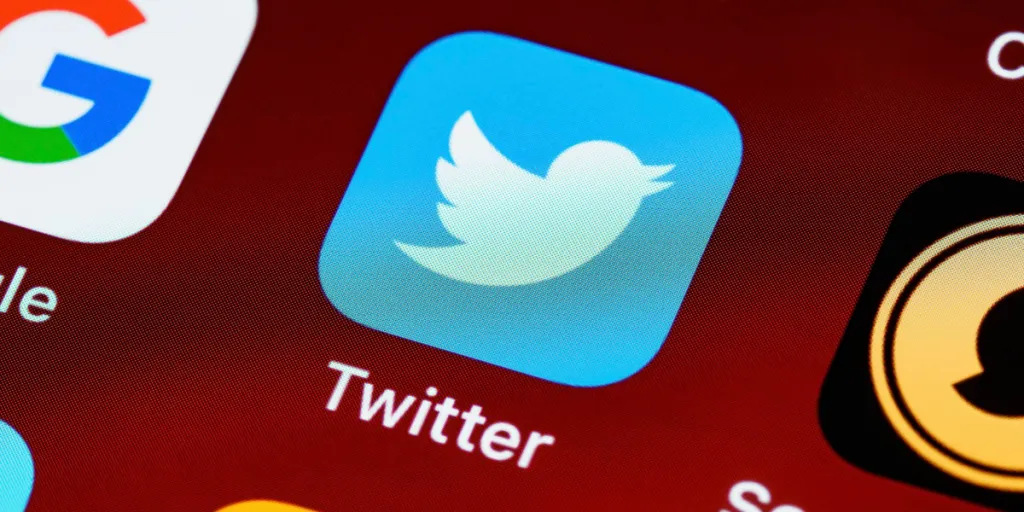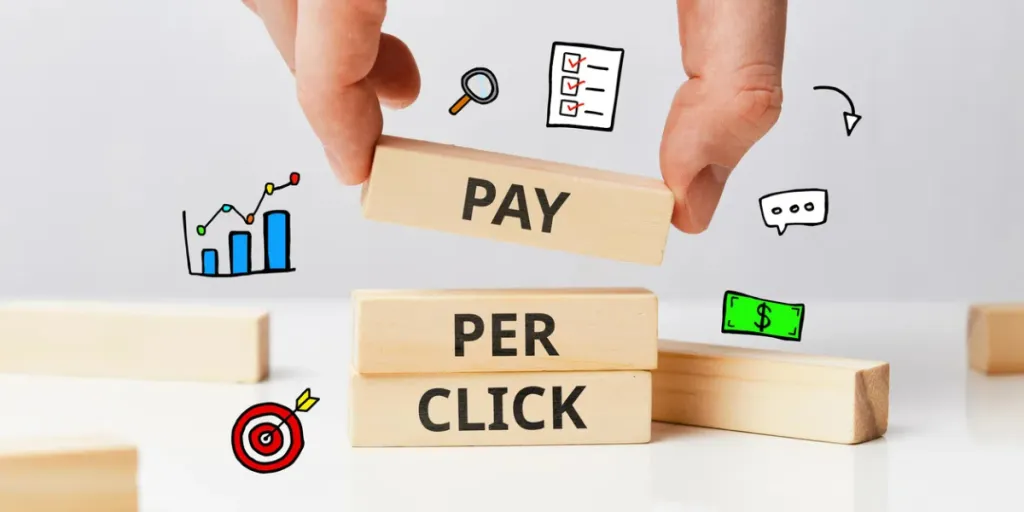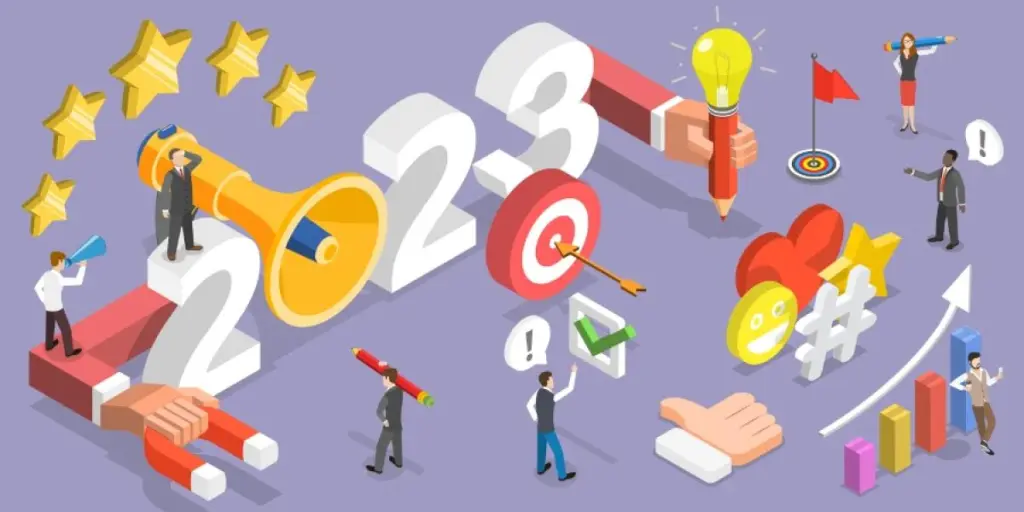Table of Contents
1. Chat with your visitors
2. Use popup forms with teasers
3. Create targeted upsell and cross-sell forms
4. Automate essential email campaigns
5. Send marketing offers with SMS
6. Display social proof
7. Make high-quality product photos and videos
8. Optimize checkout
9. Create mobile-only offers in popups
10. Share relevant product recommendations
11. Be clear about shipping and returns
12. Collect visitor feedback
13. Gather visitor behavior data in Google Analytics
14. Run retargeting campaigns
15. A/B test your campaigns and pages
Summary
Picture this: Your online store is bustling with visitors. They browse your products, add items to their carts, but then… they leave without buying.
Does this sound familiar? This common scenario underscores the importance of learning how to improve your conversion rate.
To increase website conversion, you must make the most of your existing traffic. Even a small increase can lead to significant revenue growth.
In this guide, we’ll explore 15 proven strategies to improve your conversion rate in 2024. We’ll cover how to engage visitors effectively with live chat, create compelling popup offers, and leverage email and SMS automation.
You’ll also learn about optimizing product pages and the checkout process, using social proof, and implementing personalized recommendations to improve website conversion rate.
So, are you ready to maximize the value of every site visit and watch your sales grow? Let’s dive in!
1. Chat with your visitors
Live chat provides a direct line to customers, offering real-time support that transforms hesitant browsers into buyers. Utilizing live tracking features, you can monitor visitor activity and engage them at critical moments.
For example, if a customer lingers on a product page for several minutes, you can proactively offer assistance or answer common questions.
To make the most of live chat:
- Start with a friendly greeting
- Offer a discount
- Address common concerns
Divatress, an online wig retailer, demonstrates the power of live chat to boost conversion rates. By prominently featuring its chat option, customers can quickly receive instant assistance with wig selection or styling advice:

Related:
How to optimize ecommerce conversions with live chat
2. Use popup forms with teasers
Popup forms can drive sales, but timing is everything. Site visitors often close popups that appear too early, missing out on valuable offers. So, this is where teaser strategies can make a difference.
Teasers are small, subtle elements that hint at an offer without disrupting the browsing experience. They allow customers to access discounts when they’re ready, enhancing the overall shopping experience.
Creality, a 3D printer manufacturer, uses an innovative video popup on its website to showcase multiple products simultaneously. The video format naturally draws visitors’ attention, enticing them to click and learn more:
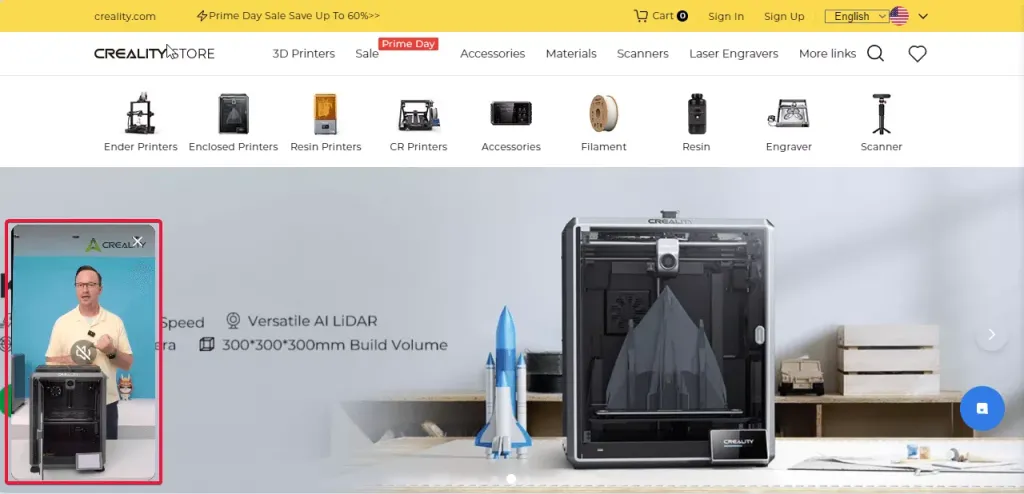
Related:
What is a popup? Top 9 popup types for 2024
3 ways to use smart popups for better conversions
3. Create targeted upsell and cross-sell forms
These forms don’t just improve conversion rate. They also help increase average order value.
Upselling entices customers to buy higher-end products, while cross-selling offers complementary items. These forms are created based on visitor behavior and page targeting. Relevance is key to increasing the conversion rate.
You can design a campaign that triggers exclusively on a specific product page. For instance, you could offer a free gift when a customer purchases that product along with one other item. This buy-two-get-one-free (B2GO) strategy is particularly effective at boosting sales.
Sleepgram exemplifies this approach by offering discounts on products related to those in a customer’s cart. This strategy not only increases average order value but also enhances the overall shopping experience:
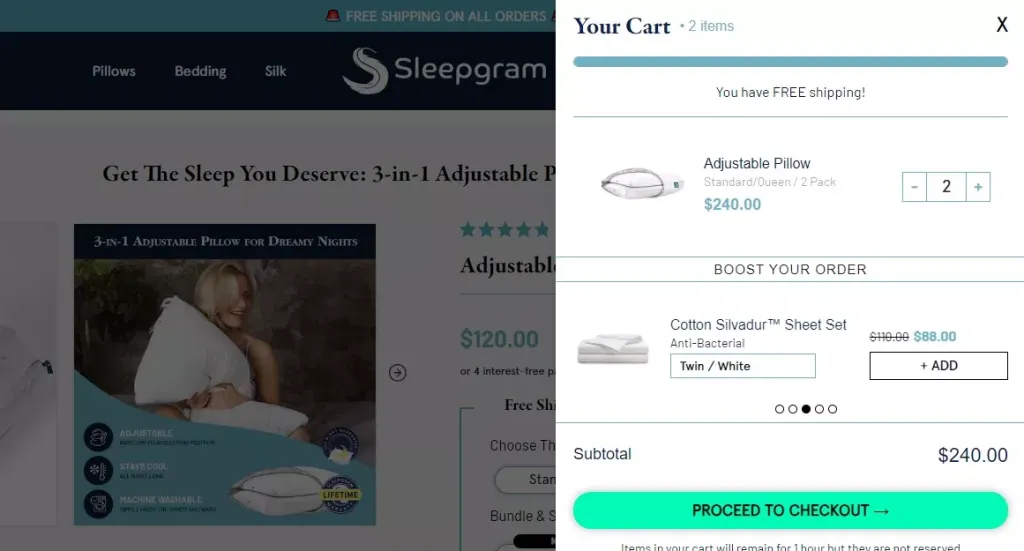
Related:
How to cross-sell retail products
Cross-selling vs upselling: Key differences and strategies
25 cross-selling examples to boost your ecommerce success
4. Automate essential email campaigns
Email automation involves setting up emails that are automatically sent based on specific triggers or schedules. This allows you to send timely, relevant messages without manual effort.
Don’t underestimate the power of email automation. Consider the case of Island Olive Oil, for example. Just three automated campaigns — making up only 1.22% of its email sends — generated 39% of its email marketing revenue.
Read the full case study here to learn more about leveraging email automation for your business.
Some key email automations to implement include:
- Welcome email series: Introduces new subscribers to your brand and offers, setting the tone for future interactions
- Abandoned cart series: Reminds customers of items left in their cart, often recovering potentially lost sales
- Win-back series: Re-engages inactive customers, bringing them back to your store
For beginners, email automation is like having a 24/7 sales team. Start with welcome, abandoned cart, and post-purchase sequences. These will engage customers at key touchpoints, help improve conversion rate while driving sales.
Evaldas Mockus, VP of Growth at Omnisend
For a detailed walkthrough on mastering email automation, check out this video:
5. Send marketing offers with SMS
Omnisend’s 2023 email and SMS marketing statistics report reveals that SMS campaigns have an average click rate of 7.6%, approximately five times higher than the 1.5% click rate for email campaigns. This high engagement rate often leads to higher conversion rates.
Some examples of SMS marketing campaigns include flash sale announcements, abandoned cart reminders, new product launches, and exclusive VIP offers.
But don’t just take our word for it — here’s what one successful business owner has to say:

“I started SMS several months ago just to kind of test it out. The ROI on it has just been absolutely insane. So we will continue to do it for our customer base.”
Allison Caufield, Senior Marketing Manager at FiGPiN
For a deeper dive into why SMS marketing is crucial for ecommerce, watch this video:
Here are some methods to collect prospects’ phone numbers:
- Website forms
- SMS-specific popups
- Checkout forms
FiGPiN asks for the phone number in the checkout form along with other details:
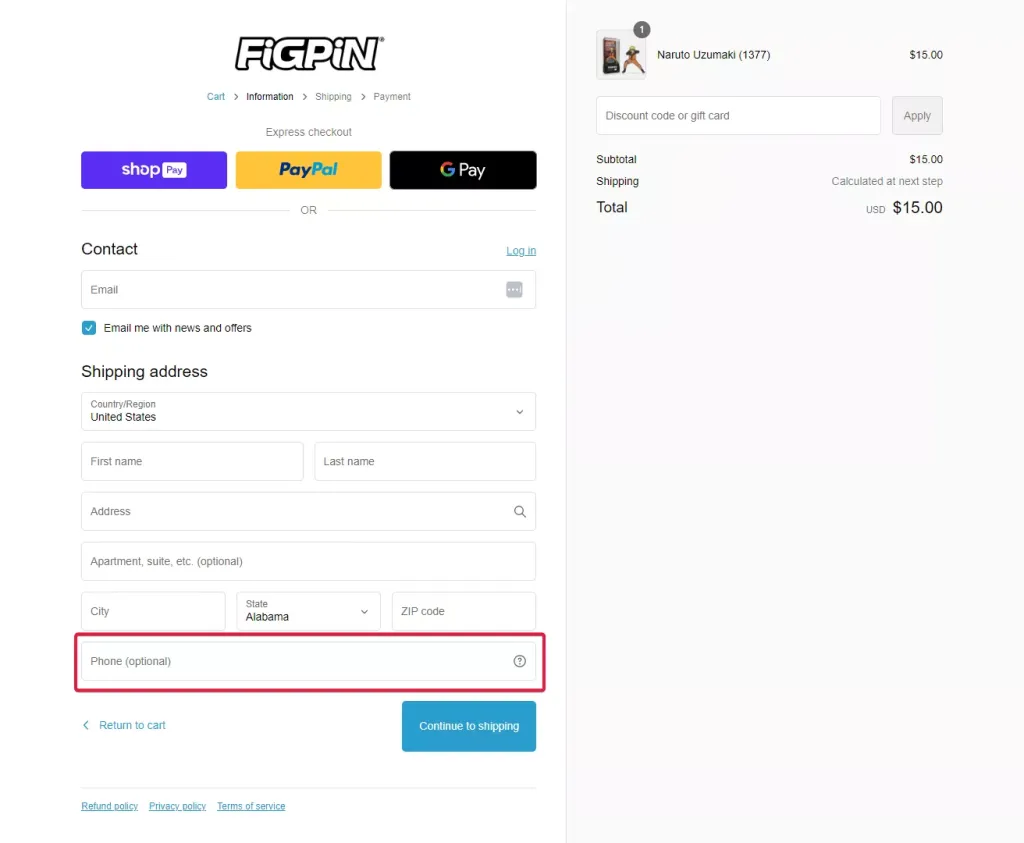
6. Display social proof
Social proof is a powerful way to build trust and increase your website’s conversion rate by showing potential customers what other people think of your products and services.
Examples of social proof for B2C and B2B include:
- Product reviews: Direct feedback from customers
- Testimonials: In-depth accounts of customer experiences
- User-generated content: Photos and/or videos of customers using your products
- Case studies: Detailed accounts of how your product or service solved a specific problem
- Expert endorsements: Recommendations from industry leaders or influencers
Here are some ways to implement social proof to improve website conversion rate:
- Review plugins or apps integrated into your ecommerce platform
- Dedicated testimonial sections on your homepage or product pages
- Social media widgets showcasing user-generated content
- Trust badges displaying certificates or awards
- Customer count or sales figures (e.g., “Trusted by over 10,000 customers”)
For example, 123Presets effectively showcases customer testimonials and reviews on its homepage. This provides immediate validation to potential customers:
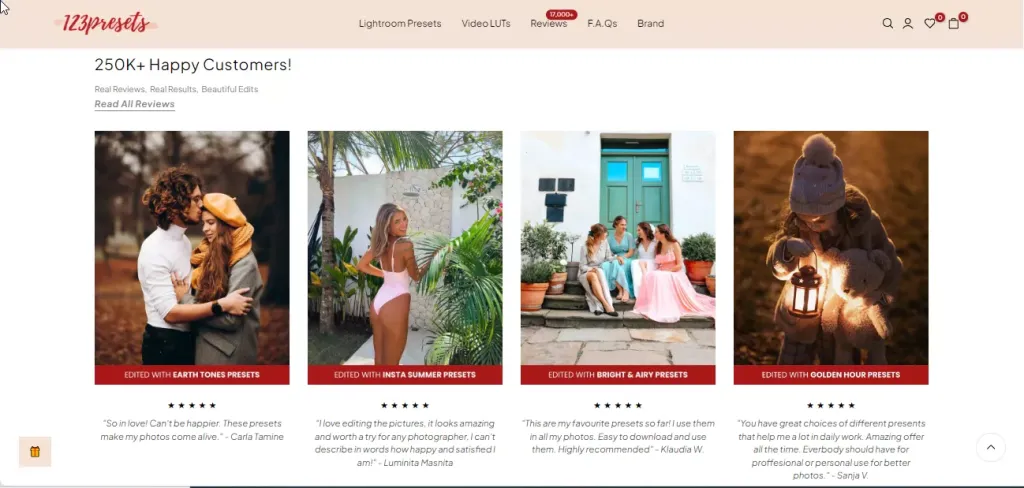
Related:
7 tips on creating a captivating product review email [+ examples]
7. Make high-quality product photos and videos
Visual content plays a crucial role in online purchasing decisions. High-quality visuals not only showcase your products but also build trust and reduce uncertainty for potential buyers.
Some compelling visuals for product pages include lifestyle photography, detailed close-ups, comparison shots, unboxing videos, 360-degree views, user-generated content, and more.
Amundsen, an outdoor clothing brand, shows the effective use of product photography to improve conversion rate. Its product pages combine lifestyle shots with detailed images:
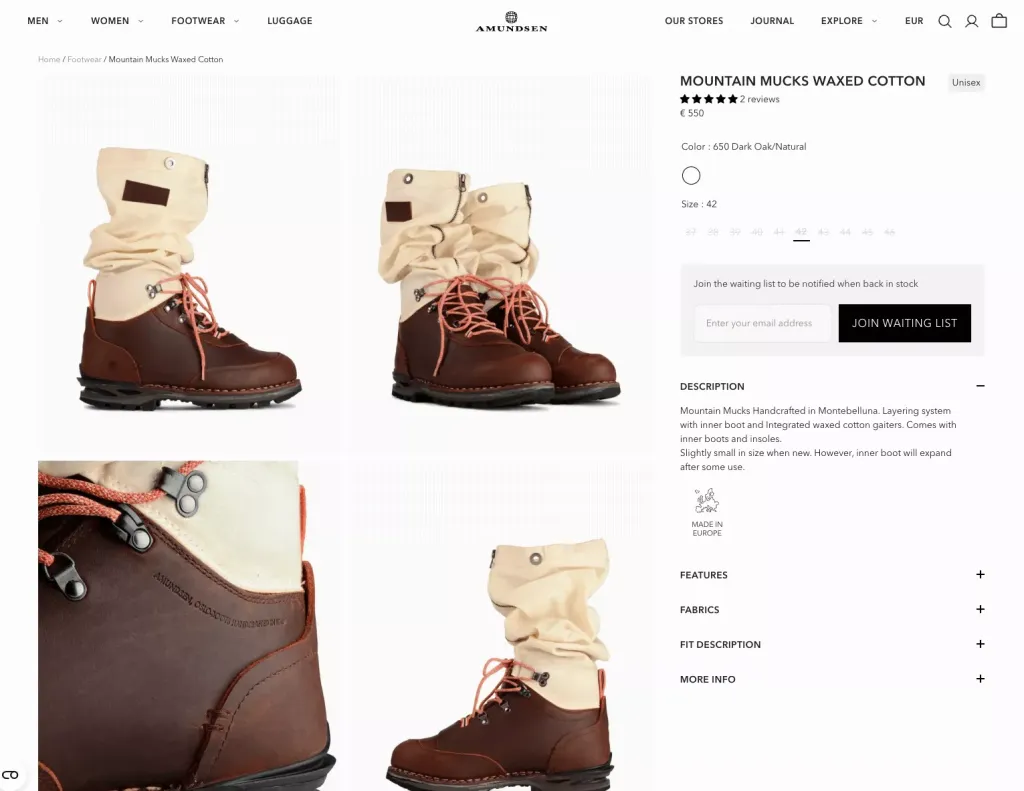
When creating your own visuals:
- Invest in good lighting, whether natural or artificial
- Maintain consistent styling
- Consider hiring a professional photographer for key products
- Incentivize customers to share their own photos and videos using your products
Remember, high-quality visuals not only improve the look of your site — they also provide essential information to customers, helping to reduce returns, boost conversion rates, and increase overall satisfaction.
Related:
9 tips on product listing optimization: How to make your goods findable
8. Optimize checkout
Optimizing your checkout process is crucial to reduce cart abandonment and increase website conversion. Plus, the checkout page is the perfect avenue for upselling and cross-selling, potentially increasing your average order value.
Here are some effective ways to optimize checkout:
- Simplify the process: Reduce the steps and necessary form fields to minimize friction
- Offer guest checkout: Don’t force users to create an account to complete a purchase
- Provide multiple payment options: Include popular methods like PayPal, Apple Pay, and buy-now-pay-later services
- Display security badges: Reassure customers that their information will stay safe
- Use progress indicators: Show customers how far along they are
- Implement smart defaults: Pre-fill information when possible to save time
- Add a persistent cart summary: Allow customers to review their order throughout the process
- Offer live chat support: Provide immediate assistance for any questions or concerns
- Include product thumbnails: Remind customers what they’re buying
To create a better user experience and remind customers of what they’re buying, Vape Superstore includes product thumbnails on its product pages:
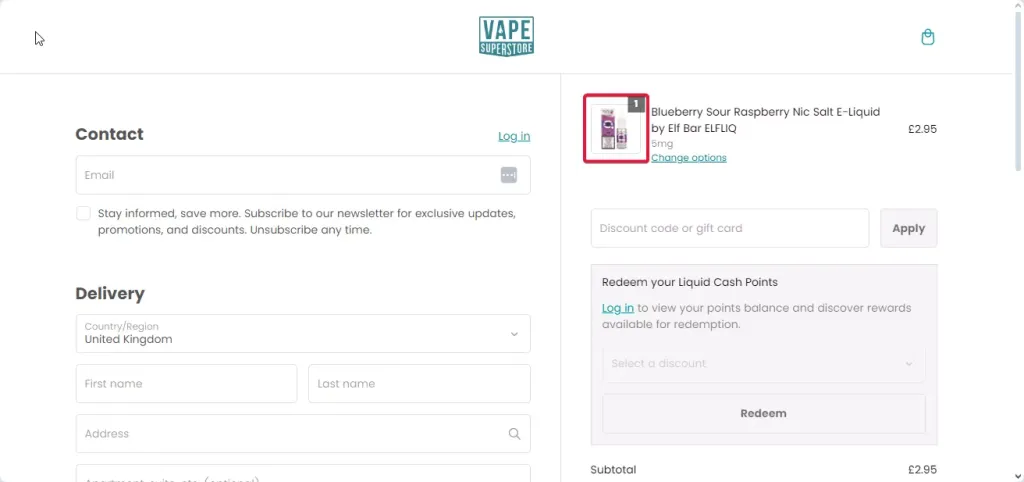
Related:
17 easy Shopify checkout page customizations to boost conversions
16 ways to optimize your ecommerce checkout [updated 2024]
9. Create mobile-only offers in popups
Mobile commerce is no longer the future — it dominates the present.
Recent data shows that mobile commerce sales reached $2.2 trillion in 2023, accounting for 60% of global ecommerce sales. This share is expected to grow to 62% by 2027, up from 56% in 2018.
That said, it’s essential to optimize mobile popups to avoid violating Google’s rules on intrusive interstitials. Failure to do so can negatively impact your search rankings.
Here are some ideas for mobile-specific campaigns:
- For B2C, offer higher discounts or exclusive deals for mobile users
- For SaaS, instead of a full signup form, use a Request a Demo button that opens a simplified form or initiates a callback
- Create time-sensitive flash sales accessible only from mobile
- Offer mobile-exclusive early access to new products or features
Brooklinen demonstrates effective mobile-specific offers with its well-designed, non-intrusive popup that offers a discount specifically for mobile users:
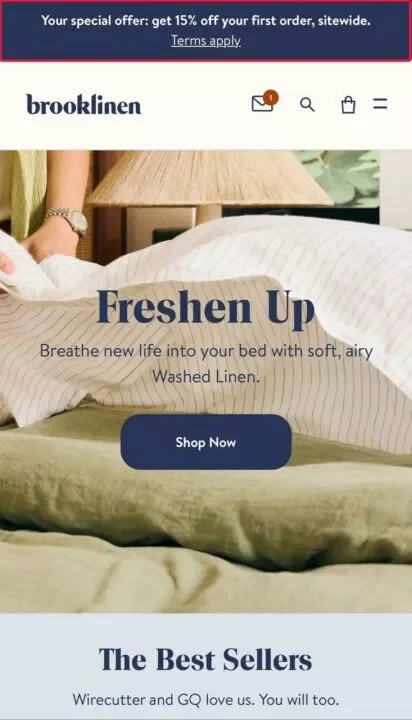
Related:
6 message types for mobile marketing: A comprehensive guide
10. Share relevant product recommendations
Product recommendations can significantly enhance the shopping experience and boost sales.
Tools like Omnisend’s Product Recommender can help automate this process. It lets you personalize the shopping experience based on customer behavior and preferences.
Here are some product recommendation campaigns to consider:
- “Complete your look”: Ideal for fashion brands, this suggests items that complement the customer’s current selection or past purchases
- Expert recommendations: Curate selections based on industry expert opinions
- Staff picks: Highlight products favored by your team
- Personalized bundle recommendations: This is based on the customer’s browsing or purchase history
- Quiz-based recommendations: Suggest products based on answers to a brief lifestyle or preference quiz
Related:
How to create relevant product recommendations that increase sales
Naked & Famous Denim’s product recommendations on the Tate + Yoko site showcase related items that complement the viewed product:

Here’s a standout example from Warby Parker — its product recommendation email features glasses tailored to your horoscope, cleverly enticing customers to make a purchase:
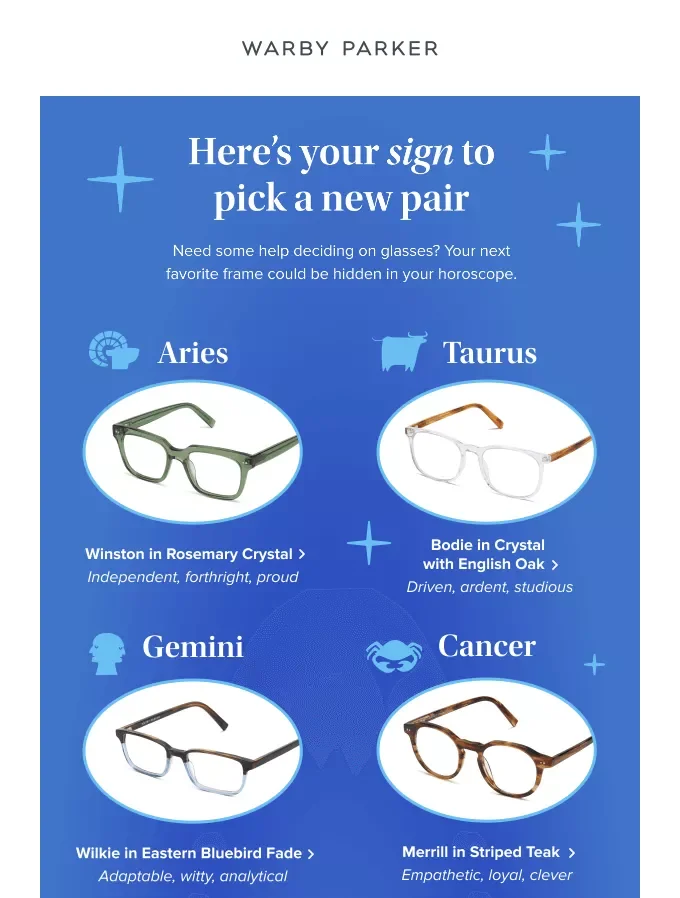
Related:
6 message types for mobile marketing: A comprehensive guide
11. Be clear about shipping and returns
Policies can make or break a sale. Unclear costs or complex return processes can deter potential buyers. To prevent this, implement these best practices:
- Display shipping costs early: Show shipping fees on product pages or in the cart before checkout
- Offer free shipping thresholds: Encourage larger purchases by offering free shipping above a certain order value
- Highlight your return policy: Make it easy for customers to find your terms for returns
- Use clear language: Avoid jargon and explain your policies in simple terms
INGLOT Canada’s shipping and returns page clearly outlines its policies. Such a clear presentation of shipping and return policies can significantly improve conversion rates and set expectations for customers:
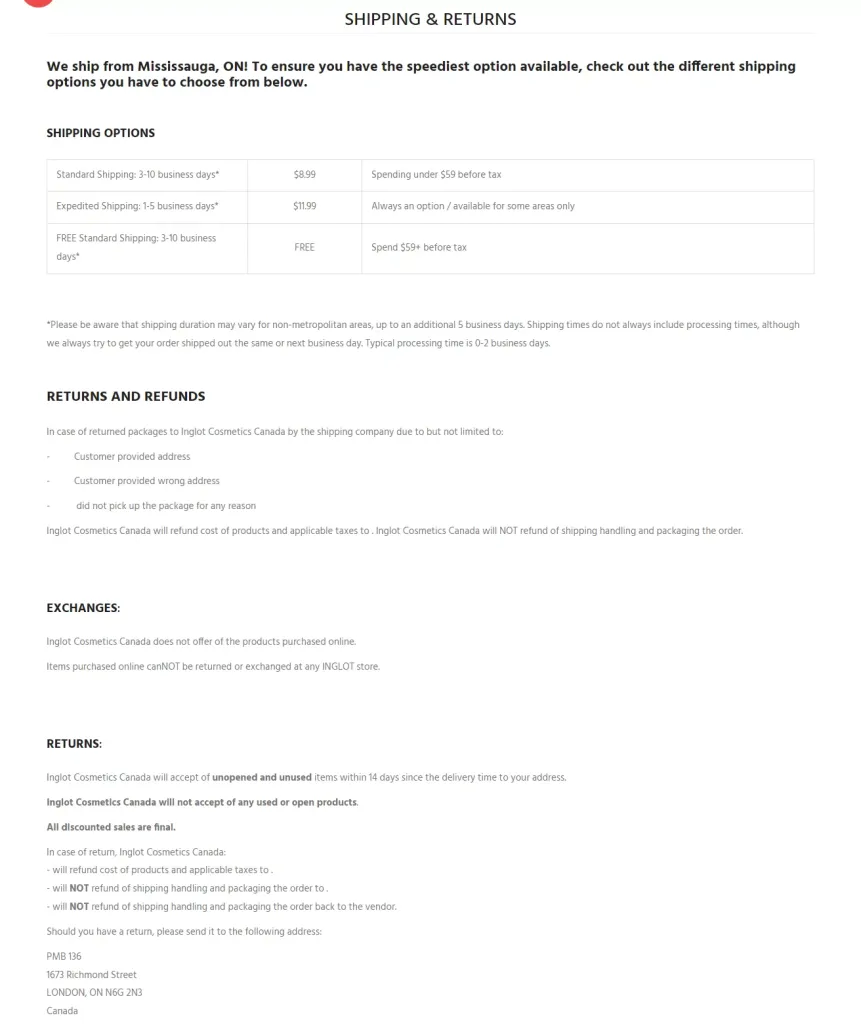
Related:
Product returns: How to nail them
4 holiday shipping tips for a successful 2023 season
12. Collect visitor feedback
Your website visitors’ opinions are gold, as they can tell you exactly what’s working and what’s not on your site.
Here’s how to gather this valuable feedback:
- Use email surveys: Send a short survey after purchase
- Implement on-site surveys: Use popups to ask specific questions about site usability
- Target wisely: Show surveys to visitors who’ve spent time on your site without purchasing
- Keep it short: Limit surveys to two or three questions for higher completion rates
- Offer incentives: Encourage participation with a small discount or entry into a giveaway
Sightglass Coffee sends this simple feedback email after purchase:

On the other hand, Converse provides an easily accessible feedback form on its website:
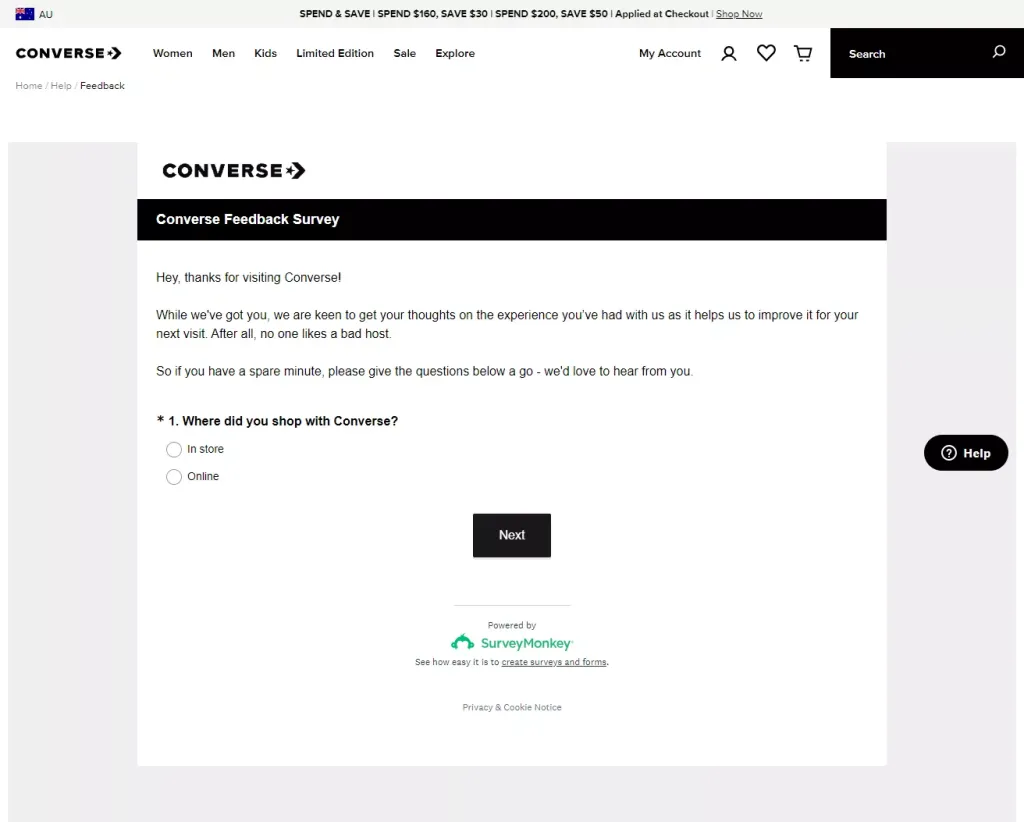
Related:
How to measure customer satisfaction for ecommerce
13. Gather visitor behavior data in Google Analytics
Understanding how visitors interact with your site is crucial to improving your conversion rate. Google Analytics provides this insight.
Here’s what to look for:
- Bounce rate: If it’s high, your landing pages might need work
- Session duration: Longer sessions often mean highly engaged visitors and vice versa
- User flow: See where visitors drop off in your sales funnel
For example, if you notice a high exit rate on your product pages, it might mean your product descriptions need improvement, or your prices aren’t competitive.
Take action based on these insights. For instance, you can:
- Improve page load times if sessions are short
- Simplify navigation if user flow shows user confusion
- Enhance product descriptions and images if product pages have high exit rates
By leveraging Google Analytics data, you can make informed decisions to improve conversion rates for your website.
Related:
A guide to lowering your cart abandonment rate with GA
14. Run retargeting campaigns
With retargeting, you show ads to people who have already visited your site and are familiar with your brand.
Amundsen saw great results with retargeting. Using Omnisend to sync its US customer segment to Facebook, it achieved a click-through rate twice as high as its regular ads.
To set up your own retargeting campaigns:
- Choose a platform (like Google Ads or Facebook Ads)
- Install the platform’s pixel on your site
- Create audience segments
- Design tailored ads for each segment
When running retargeting ads, some KPIs to track include click-through rate (CTR) and conversion rate. By personalizing your retargeting ads to each audience segment, you can significantly boost these metrics.
Here are some examples of retargeting ads. These show how retargeting ads can remind customers of products they viewed and offer incentives to complete their purchases.
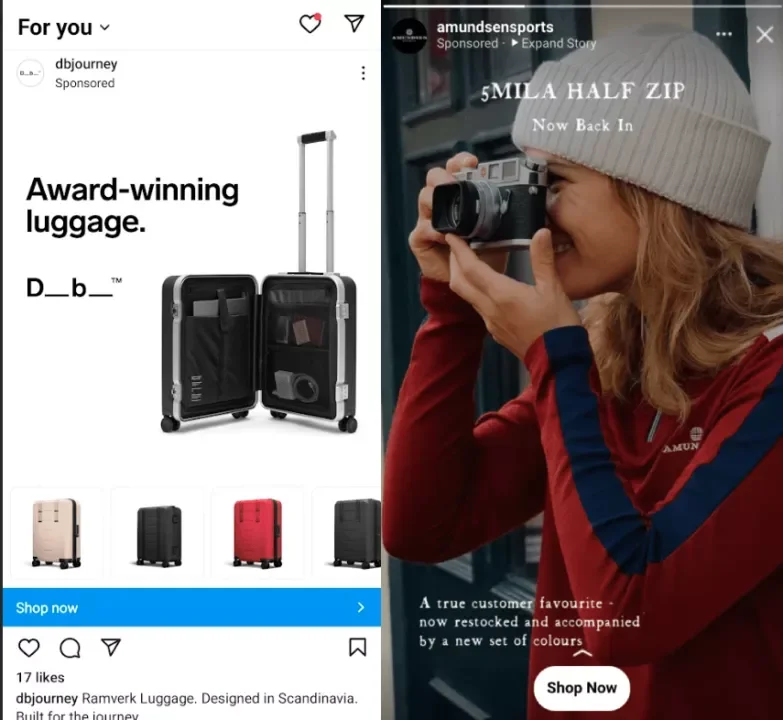
Related:
Social media and email marketing: How to integrate
The ultimate guide to behavioral targeting
15. A/B test your campaigns and pages
A/B testing compares two versions of a webpage or campaign to see which one performs better. It’s a reliable way to improve conversion rates based on actual data.
Say you sell winter jackets, for instance. You might test two different headlines on your product page to see which drives more sales.
However, you’re not limited to split-testing headlines alone. Other page elements you can test include:
- CTA buttons
- Images
- Product descriptions
- Email subject lines
Remember, test one element at a time. If you change multiple things, you won’t know which change made the difference.
Expert tip: Start with elements that have the biggest impact, such as your main CTA button or headline. Small improvements here can lead to significant conversion boosts.
For a more in-depth explanation of A/B testing, check out this tutorial:
Related:
The all-in-one guide to email A/B testing
Omnisend’s new A/B Testing for Forms helps you to grow your email list faster than ever
Summary
Conversational commerce, through tools like live chat and personalized messaging, plays a crucial role in improving conversion rates. It strengthens the customer relationship and instills a sense of authenticity.
By engaging customers in real time, addressing concerns, and providing personalized recommendations, you create a more interactive shopping experience.
This approach, combined with suitable strategies and ecommerce tools, can significantly improve the conversion rate for your ecommerce website. So, go ahead and incorporate the tips discussed into your ecommerce store to improve conversion rate and drive sales.
Source from Omnisend
Disclaimer: The information set forth above is provided by omnisend.com independently of Alibaba.com. Alibaba.com makes no representation and warranties as to the quality and reliability of the seller and products. Alibaba.com expressly disclaims any liability for breaches pertaining to the copyright of content.


